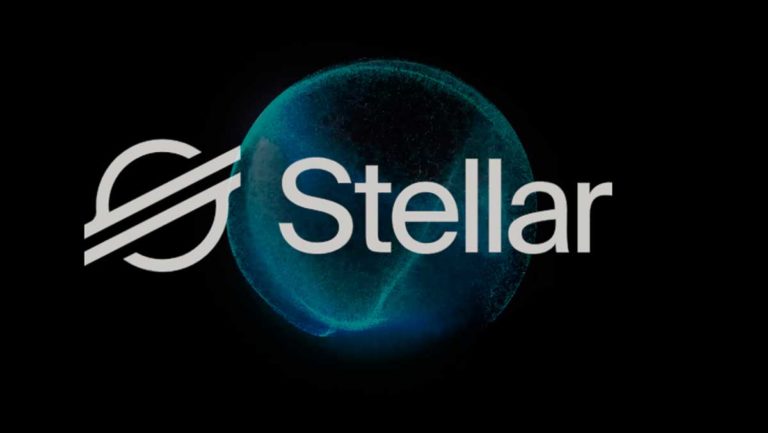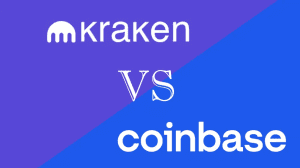What Is Stellar (XLM)? Blockchain and Crypto Explained

Stellar offers a unique approach to financial services and cross-border transactions in the modern world of cryptocurrency and blockchains. Founded by Jed McCaleb in 2014, Stellar aims to facilitate seamless and efficient cross-border payments, making it easier for individuals and institutions to move money across borders.
This article extensively explores Stellar’s history, functionality, distinctive features, advantages and disadvantages, and use cases. We also examine XLM, its native cryptocurrency, and how to use it.
Stellar (XLM) Summarized
Read this short version if you’re short on time.
- Stellar, founded by Jed McCaleb in 2014, is a blockchain platform focused on efficient cross-border payments and financial services.
- It uses the Stellar Consensus Protocol (SCP) and its native cryptocurrency, XLM, as a bridge currency and spam prevention mechanism.
- Unique features include a decentralized exchange, anchors to bridge traditional assets, multi-signature support, low transaction costs, and fast confirmation times.
- Stellar is versatile, enabling cross-border payments, tokenization, micropayments, and remittances.
- However, downsides include centralization concerns, competition, complexity, and regulatory challenges.
What Is Stellar and how Does It work?
Stellar is an open-source blockchain platform that aims to facilitate the exchange of digital assets and enable cross-border transactions. Its primary goal is connecting financial institutions, payment systems, and individuals. As a result, it allows for fast, low-cost, secure money transfers. Stellar’s architecture is built around a consensus mechanism called the Stellar Consensus Protocol (SCP).
SCP relies on a network of validators, including financial institutions and organizations, to reach a consensus on the state of the blockchain. Unlike Proof of Work (PoW), SCP is energy-efficient, making it more environmentally friendly. Stellar’s native asset, XLM, is crucial in preventing spam and facilitating cross-border transactions by serving as a bridge currency.
Furthermore, Stellar’s network includes anchors, which are trustworthy entities that issue assets on the blockchain. They connect the gap between the Stellar network and traditional financial systems by representing real-world assets like currencies, stocks, or commodities. Also, the platform supports multi-signature accounts, enhancing security by requiring multiple signatures to authorize transactions.
Brief History
Stellar’s journey began in 2014 when Jed McCaleb, one of the co-founders of Ripple (XRP), established the Stellar Development Foundation (SDF). The project aimed to address some of the limitations of traditional financial systems, such as high transaction fees and lengthy settlement times.
Stellar initially forked from the Ripple protocol but has since evolved into an independent and thriving blockchain platform.
Pros
- Efficient cross-border transactions: Stellar’s blockchain facilitates rapid and cost-effective cross-border payments, making it a compelling choice for international money transfers.
- Decentralized exchange: The built-in decentralized exchange enhances liquidity and enables easy asset trading.
- Energy efficiency: The SCP consensus mechanism consumes significantly less energy than PoW, contributing to environmental sustainability.
- Financial inclusion: Stellar’s mission to connect the unbanked and underbanked populations promotes financial inclusion worldwide.
- Strong partnerships: The platform has established partnerships with prominent organizations like IBM and Deloitte.
Cons
- Centralization concerns: Some critics argue that the SDF controls a large amount of XLM tokens, with only a few validators on the network. Therefore, it gives the impression of a centralized authority.
- Competition: Stellar faces stiff competition from other blockchain projects and financial institutions aiming to improve cross-border payments.
- Complexity: The concept of anchors and the platform’s ecosystem can be complex for newcomers to understand.
- Regulatory challenges: Like other blockchains, Stellar must navigate regulatory hurdles in different jurisdictions.
Stellar Use Cases
Stellar’s versatility opens the door to various use cases:
- Cross-border payments: Stellar facilitates cross-border transactions, allowing individuals and businesses to send money globally with minimal fees and fast confirmation times.
- Tokenization: Stellar allows the creation of tokens representing real-world assets, such as commodities or real estate. Hence, trading and management of these assets becomes easier.
- Micropayments: The platform’s low transaction costs make it ideal for micropayments in applications like content monetization, in-game purchases, and pay-as-you-go services.
- Remittances: The efficient cross-border capabilities make it an excellent choice for remittance services. It reduces costs for migrants sending money to their home countries.
XLM: The Native Cryptocurrency
XLM, commonly referred to as Stellar Lumens, is the native cryptocurrency of the Stellar network. It serves multiple purposes, including preventing spam on the platform by requiring small amounts of XLM for transaction fees and as a bridge currency for cross-border transactions. XLM is also available for trading on various cryptocurrency exchanges.
How to Buy XLM
To acquire XLM, follow these steps:
- Select a crypto exchange: Select a reputable exchange that supports XLM trading, such as Binance, Coinbase, or Kraken.
- Create an account: Sign up for an account on the chosen exchange and complete the necessary verification process.
- Deposit funds: Deposit funds, typically in the form of Bitcoin or Ethereum, into your exchange account.
- Purchase XLM: Once you make your deposit, place an order to buy XLM using your deposited cryptocurrency.
- Withdraw to wallet: For added security, consider transferring your purchased XLM to a private wallet that you control.
Stellar vs. Ripple
Stellar and Ripple are two blockchain platforms with similar origins, with Jed McCaleb serving as founder for the first and co-founder for the second. Both platforms have garnered significant attention for their focus on improving cross-border payments and financial services. While they share some similarities, they also have distinct differences that set them apart.
Mission and Focus
Stellar aims to facilitate cross-border payments and provide financial services to populations with little or no access to banking services. Its mission centers around financial inclusion and accessibility.
Ripple, on the other hand, primarily targets financial institutions and banks. Its primary focus is to provide these entities with the tools and infrastructure needed to enhance the efficiency of cross-border payments and settlement processes.
Governance and Decentralization + Partnerships and Adoption
Stellar and Ripple offer decentralized networks. However, they both receive criticism for having centralized features. Stellar controls a large amount of XLM tokens and some validators, while Ripple Labs maintains a significant degree of influence over the network’s operation.
While Stellar has established partnerships with organizations like IBM and Deloitte, Ripple has partnered with numerous banks and financial institutions as well. Major players in the financial sector have adopted the RippleNet network, including MoneyGram, American Express, and Standard Chartered.
Native Crypto Token and Target Audience
Stellar’s XLM serves as a bridge currency for facilitating network transactions and preventing spam. Meanwhile, Ripple’s XRP has dual use cases: as a bridge currency and for providing liquidity to financial institutions.
Stellar’s target audience includes both financial institutions and individuals. It seeks to provide financial services to the unbanked and underbanked populations, making it accessible to many users.
On the other hand, Ripple primarily caters to financial institutions, banks, and payment service providers. Its solutions seek to facilitate their operations and reduce costs.
Frequently Asked Questions
Learn more about Stellar and XLM.
What is the Stellar Consensus Protocol (SCP)?
SCP is Stellar’s consensus mechanism that relies on a network of validators to agree on the state of the blockchain, ensuring security and reliability.
Can I use Stellar for personal transactions, or is it primarily for institutions?
The platform is designed for both individuals and institutions, making it versatile for various use cases, including personal transactions.
Is XLM required for every transaction on the Stellar network?
Yes, a small amount of XLM is required for transaction fees to prevent spam on the network.
Are there any restrictions on who can use Stellar?
Stellar is open to anyone, promoting financial inclusion and enabling cross-border payments for individuals and businesses worldwide.
How does Stellar ensure the security of assets on its network?
The platform incorporates multi-signature support and anchors, which are trustworthy entities, to enhance the security of assets on the network.
Stellar and XLM Explained – Final Words
Stellar has carved a niche in the blockchain industry by addressing the challenges of cross-border payments and promoting financial inclusion. Its unique features, efficiency, and partnerships have positioned it as a noteworthy platform for financial services and asset exchange.
However, there are a few downsides, including centralization concerns and fierce competition from other blockchains and cryptos.
Please note that cryptocurrency investments carry inherent risks, and it is essential to conduct thorough research and seek professional advice before engaging in any financial transactions.





